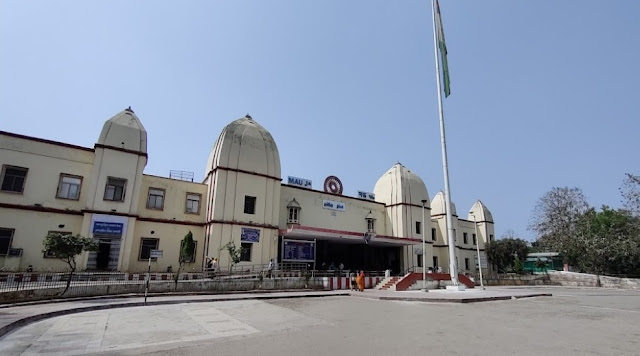Dibrugarh District
Dibrugarh district is a district in the Indian state of Assam. The district headquarters is located in Dibrugarh city. Dibrugarh city is an industrial city with vast tea plantations in Upper Assam. It is located at a distance of 435 kilometers from the state capital Dispur. Dibrugarh district was a famous cantonment of Ahoms during the Ahom Sutia war and was earlier known as "Dibrumukh".
The name of the district is made up of two words "Dibru" and "Garh". The word "Dibru" has evolved from the Dibru River of Assam meaning "blister" and "Garh" meaning "fort". During the British rule, a fort was built on the banks of river "Dibru". Hence, the natives believe that this could be the reason behind the name "Dibrugarh".
In the year 1842, the British declared Dibrugarh as the headquarters of Lakhimpur district. During the period of World War II, the city of Dibrugarh was a major military base and was used as a transit camp for people evacuated from Burma. In 1971, Dibrugarh sub-division itself became a full-fledged district. But in 1976, Dibrugarh was separated from Lakhimpur and made a new district.
Attraction
Dibrugarh District, Dibrugarh and its surrounding places attract a large number of travelers every year. The district is full of tea gardens, wild life sanctuaries, sessions and meadows. Famous as the "Tea City of India", Dibrugarh has been a popular destination in Assam for decades.
Dibrugarh has many centers of attraction which offer an opportunity to enhance religious, cultural knowledge and experience the beautiful heritage and landscape of Assam. Jokai Botanical Garden, one of the must-see places in Dibrugarh, houses some endangered plant species. The tea gardens of Dibrugarh are famous for the finest Assam tea.
The Satras of the district represent the Vaishnava culture and help unite the natives of Assam. Some of the major Satras of the district are Dehing Namati Satra, Dinjoy Satra, Modrakhat Satra, Garpara Satra and Dehing Satra. The Maidams of the district also attract tourists from different parts of the world. Barbarua Maidam, Sarumechalo and Bormecho Maidam, Lekai Chetiya Maidam and Bahikhowa Maidam are the most prominent among all the maidams in the district. Dibru-Saikhowa National Park, Jeypore Rainforest and Dehing Patkai Life sanctuaries are other attractions of the district.
The climate of Dibrugarh is very pleasant, you can visit here in any month of the year, mostly the weather is pleasant. The best time to visit Dibrugarh is from October to December and January to March.
How to Reach Dibrugarh
Dibrugarh is well connected by roads, railways, airways and waterways. Dibrugarh has its own airport known as Mohanbari Airport and is well connected to cities like Mumbai, Delhi and Kolkata.
Local taxis run regularly from the airport. Dibrugarh Railway Station is the main railway station of the district.
To reach Dibrugarh, buses are easily available from various cities of Assam like Itanagar and Dimapur.
Population of Dibrugarh District
According to 2011 census, the population of the district is 13,26,335. The sex ratio in the district is 961 females per 1000 males. The main language of the district is Assamese.
Economy of Dibrugarh District
Major part of the revenue in the district comes from tea cultivation and oil companies like ONGC and Oil India Limited. Most of the population of the district earns their livelihood by cultivating rice, sugarcane and pulses. There are also some coal mining and petroleum production industries.
Education in Dibrugarh District
The district is known for higher education throughout Northeast India. This district has been a center of education since the era of British India. The literacy rate of the district is 76.05%. Dibrugarh University is the easternmost university of India which was established in 1965. Dibrugarh Polytechnic, Assam Medical College, Vivekananda Kendriya Vidyalaya, Delhi Public School, Dibru College, Gyan Vigyan Academy are some of the best educational institutions in the district.

















Comments